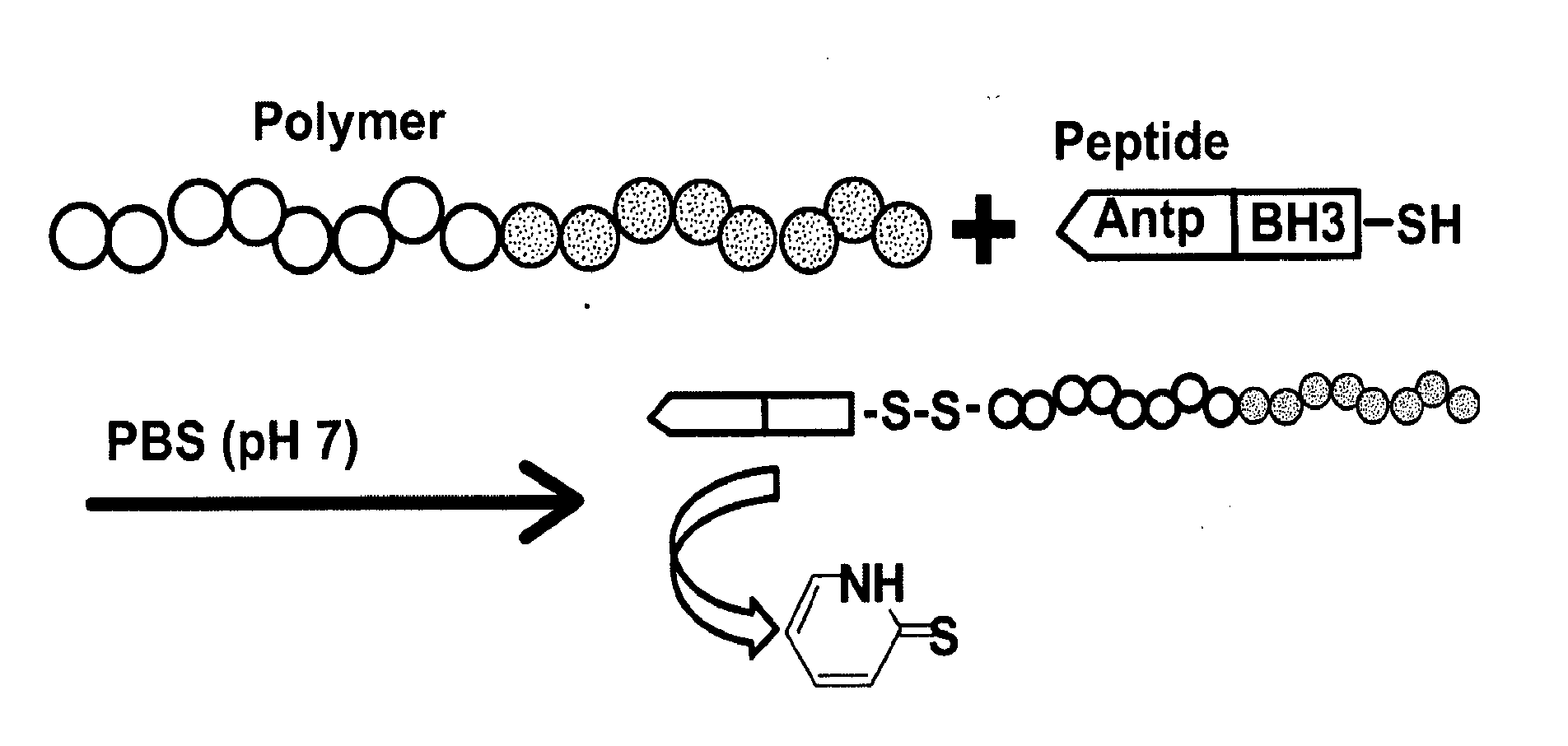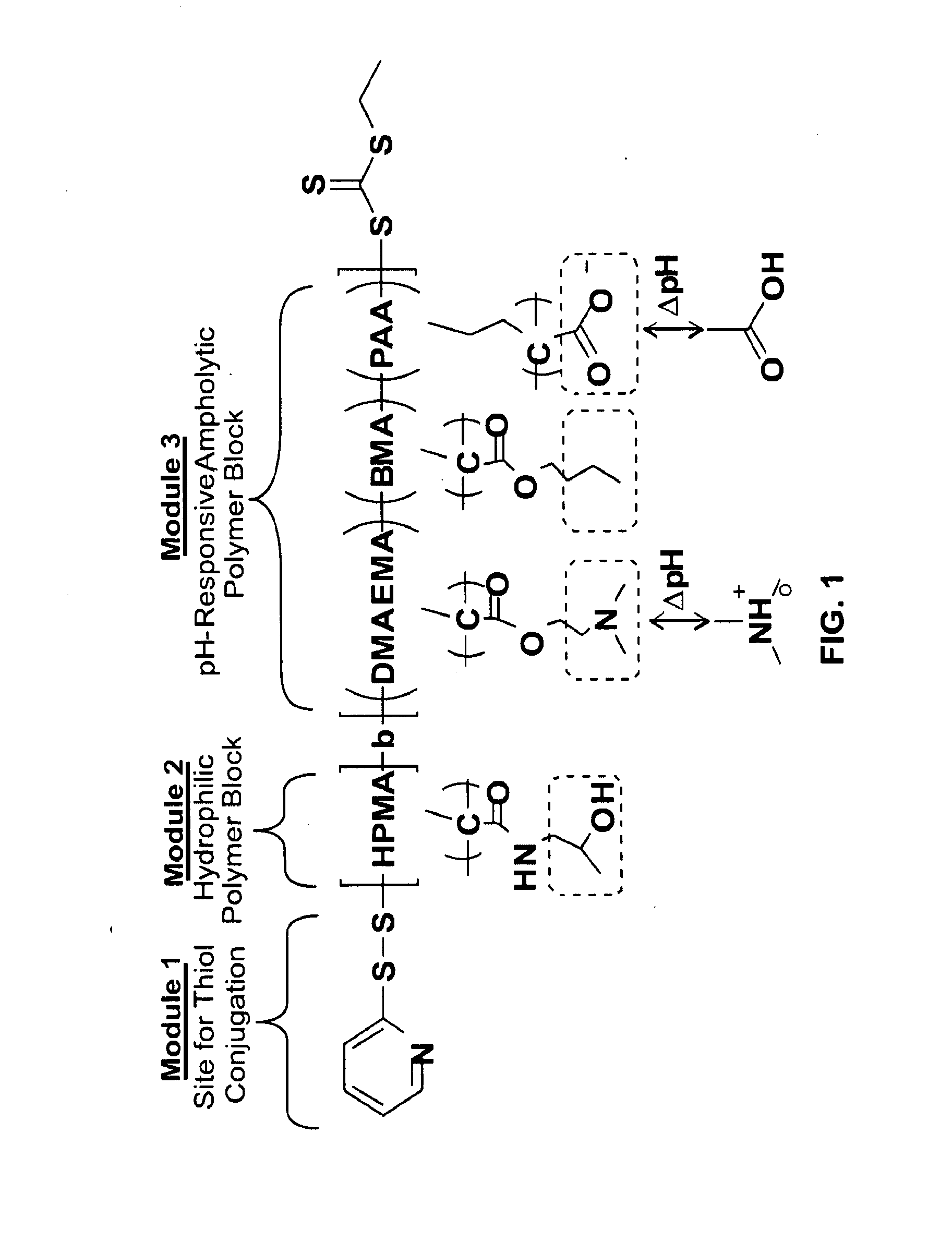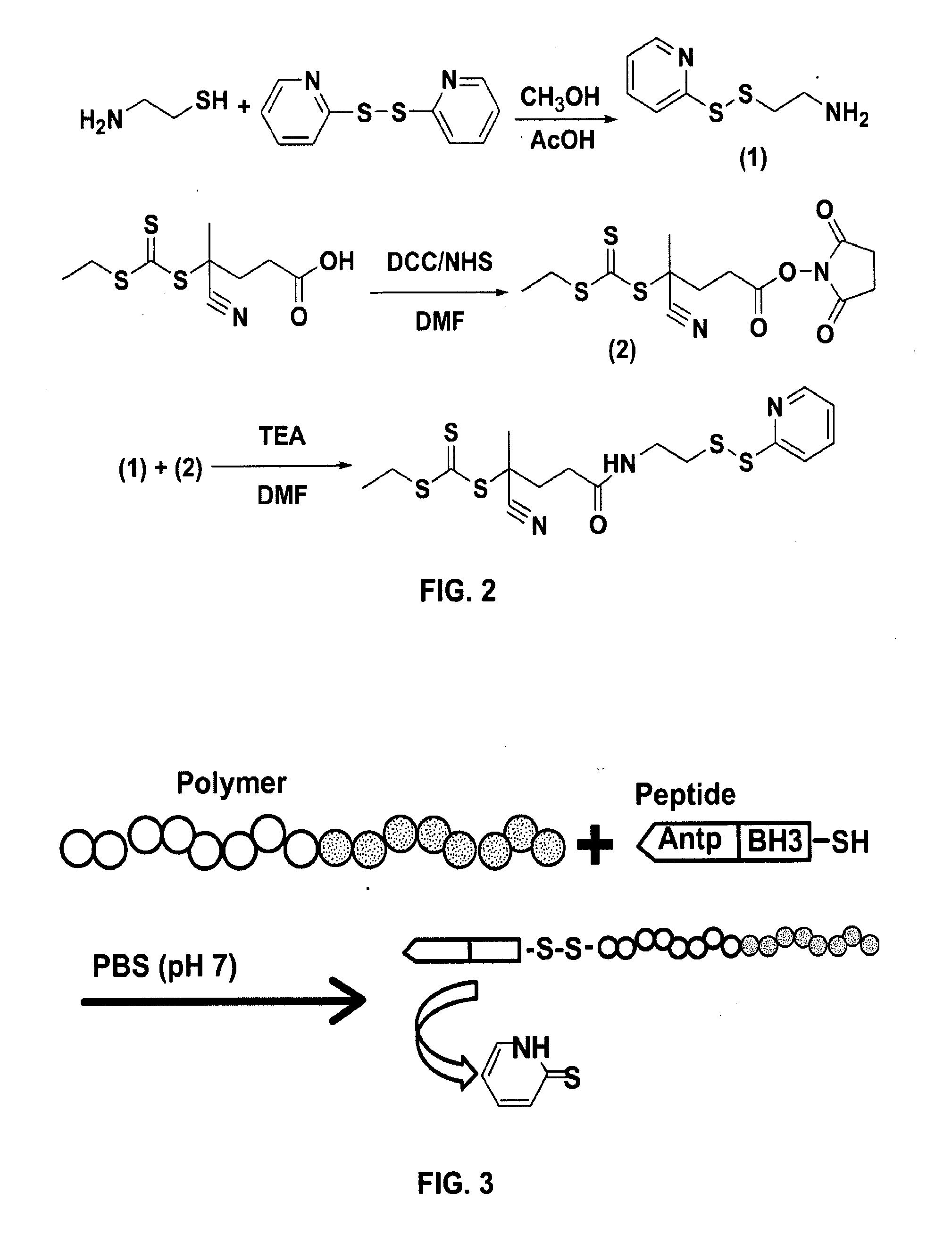Bispecific intracellular delivery vehicles
- Summary
- Abstract
- Description
- Claims
- Application Information
AI Technical Summary
Benefits of technology
Problems solved by technology
Method used
Image
Examples
example 1
Construction of a ras bispecific polymer delivery vehicle
[0151]The first affinity reagent, OKT 9, is a monoclonal antibody against the human type 1 transferrin receptor and is available from ATCC(CRL 8021 C). The hybridoma is cultured, expanded and the secreted monoclonal antibody harvested and purified using protein A or G chromatography (Antibody Engineering: A Practical Approach, McCafferty, Hoogenboom and Chiswell Eds, IRL Press 1996).
[0152]The second affinity reagent, Y13-259, is a monoclonal antibody against the ras protein (Furth et al., 1982) and is obtained as a hybridoma from ATCC(CRL 1742). The hybridoma is cultured, expanded and the secreted monoclonal antibody harvested and purified using protein A or G chromatography (Antibody Engineering: A Practical Approach, McCafferty, Hoogenboom and Chiswell Eds, IRL Press 1996).
[0153]The first and second affinity reagents are co-conjugated to poly(propylacrylic acid) (PAA)-co-pyridyl disulfide acrylate (PDSA), p(PAA-co-PDSA), via...
example 2
Demonstration of Activity of a Ras Bispecific Polymer Delivery Vehicle
[0155]The HT1080 cell line (available from ATCC), harboring an activated N-ras gene, is cultured in DMEM with 10% FCS and antibiotics at 37 degrees centigrade in a humidified atmosphere of 10% carbon dioxide in air. Cells are expanded, plated at a density of 100,000 cells per 60 mm plastic cell culture Petri dish in 5 ml liquid cultures, incubated for 15-18 h, then exposed to 0, 1, 10, 50 and 200 ug / ml of the bispecific polymer delivery vehicle for 8 h. Cells are then removed from the plastic with trypsin / EDTA, centrifuged, resuspended in culture media, counted using a hemacytometer, and seeded at a density of 20,000 cells / ml in culture media as above, but containing the same concentrations of the bispecific polymer delivery vehicle and 0.3% agar in 60 mm Petri dishes (5 ml / dish).
[0156]Cell cultures are incubated for 14 days at 37 degrees centigrade in a humidified atmosphere of 10% carbon dioxide in air. The cult...
example 3
Construction of a p53 Bispecific Polymer Delivery Vehicle
[0157]The first affinity reagent is the OKT 9 antibody described above in Example 1. The second affinity reagent, PAb421, is a monoclonal antibody (Harlow et al, 1981) directed against the carboxyl terminus of human p53 protein, and can rescue the transcriptional defects of the p53 mutant present in SW480 colorectal carcinoma cells (Selivanova et al., 1997). PAb421 is obtained as a hybridoma. The hybridomas expressing the first and second affinity reagents are cultured, expanded and the secreted monoclonal antibody harvested and purified using a protein A or G column as described above in Example 1.
[0158]The first and second affinity reagents are then co-conjugated to the p(PAA-co-PDSA) polymer and purified as described above in Example 1.
PUM
| Property | Measurement | Unit |
|---|---|---|
| Amphiphilic | aaaaa | aaaaa |
| Therapeutic | aaaaa | aaaaa |
| Responsivity | aaaaa | aaaaa |
Abstract
Description
Claims
Application Information
 Login to View More
Login to View More - R&D
- Intellectual Property
- Life Sciences
- Materials
- Tech Scout
- Unparalleled Data Quality
- Higher Quality Content
- 60% Fewer Hallucinations
Browse by: Latest US Patents, China's latest patents, Technical Efficacy Thesaurus, Application Domain, Technology Topic, Popular Technical Reports.
© 2025 PatSnap. All rights reserved.Legal|Privacy policy|Modern Slavery Act Transparency Statement|Sitemap|About US| Contact US: help@patsnap.com



